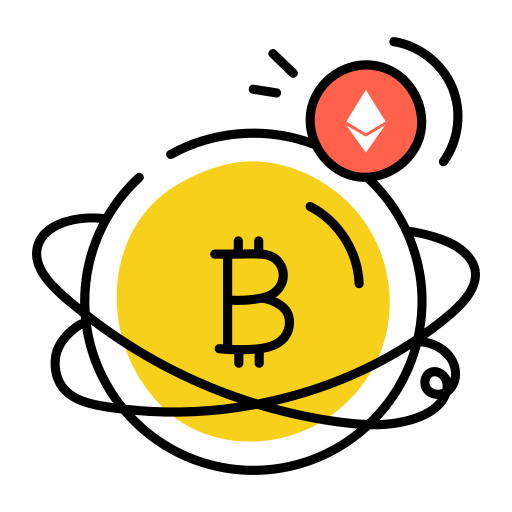
One of the key innovations of Bitcoin is its solution to the double spending problem that had plagued prior digital currencies. Double spending refers to successfully using the same funds in multiple transactions, which is easy to accomplish digitally. Bitcoin’s decentralized blockchain prevents this by confirming transactions across a peer-to-peer network. However, there are still potential attack vectors that malicious actors could exploit to double-spend Bitcoins. As cryptocurrency adoption grows, it is important to examine techniques to counter Bitcoin double-spending. This article will explore the current strategies and protections available to combat double spending on the Bitcoin network.
Payment Verification Through Block Confirmations
The most basic protection against double spending on Bitcoin is to wait for transactions to be confirmed by the network before accepting payment. Each new block on the blockchain serves to confirm the transactions in the preceding block, making manipulations and alterations increasingly difficult over time. For small purchases, payees may be satisfied with only 1 or 2 confirmations before assuming the payment is valid. Higher-value transactions may require 5 or 6 confirmations before the payee releases goods or services to the payer. This simple strategy takes advantage of Bitcoin’s decentralized confirmation process to ensure payments are valid and avoid double-spending.
Detection Of Double Spends Attempts
Attempted double spends leave detectable traces on the blockchain in the form of conflicting unconfirmed transactions. When a malicious actor issues a secondary transaction for the same inputs, it creates a double spend race between the two transactions. Mining nodes can identify such conflicts within their transaction pools and alert the broader network. Exchanges, merchants, and users can configure notifications for potential double-spending attempts on payments to them. The more rapidly conflicts can be detected, the faster precautions against double spending can be implemented before an attack succeeds.
Setting Minimum Transaction Fees
Transaction fees create an economic deterrent to carrying out Bitcoin double-spending. Any double-spending attempt must include fees on both the original and double-spend transactions to incentivize miners. Requiring a minimum transaction fee ensures that some cost is incurred for any double spending effort, reducing the incentives to defraud the system.

Users and institutions can implement minimum fee policies appropriate to their risk tolerance, increasing costs for potentially malicious actors. As transaction fees rise on the Bitcoin network, double-spending attempts become more expensive.
Off-Chain Payment Channels
Emerging solutions like the Lightning Network create secure off-chain payment channels between users. These micropayment channels enable instant, low-cost Bitcoin transfers that avoid delays and fees associated with on-chain transactions. Since the channels are directly between users, attempted double spends can instantly be detected and the channel closed before funds are stolen. The Lightning Network scales Bitcoin transactions while also nearly eliminating the potential for double spending using off-chain transfers.
Payment Finality Through Checkpoint Confirmations
Some service providers may utilize checkpoint confirmations after several blocks to establish transaction finality. For example, an exchange could treat a transaction as finalized after it is buried under 8 blocks on the blockchain since reversing it would require overwriting those 8 blocks through a 51% attack. This provides statistical assurance against double spending given the network’s hashing power. While not completely impossible, overturning many checkpointed blocks becomes impractical for attackers, disincentivizing double spending efforts.
Whitelisting Trusted Payment Sources
Entities accepting large payments can maintain whitelists of trusted accounts and payment sources. This focuses risks on new, unverified users rather than established clients with transaction histories. Whitelisting allows quicker security precautions to be implemented for payments originating outside the trusted set. Combined with other tools, whitelisting trusted payers concentrates anti-double spend efforts on higher-risk users. This is analogous to how banks allow greater transaction access to long-term customers.
Atomic Swap Technology
Atomic swaps involve exchanging one cryptocurrency for another simultaneously between parties, avoiding any risk of funds being sent first. This technique could also be leveraged across exchanges to avoid double-spending. Traders could initiate an on-chain atomic swap for Bitcoin in return for another asset. This assures either the trade completes or no funds change hands, eliminating any potential for double-spending. As decentralized exchanges advance, cross-chain atomic swaps will provide powerful protection.
Incentives Through Staking And Deposits
Users can be incentivized against double-spending by requiring staked deposits or collateral accounts. Merchants could require users to make small Bitcoin deposits that are forfeited in the event of a double-spend attempt. Microlenders and Bitcoin banks could maintain collateral account balances from borrowers to recoup losses from any fraud. Requiring skin in the game deters users from even attempting double spends given the economic losses they will incur. Staking and collateral models align user incentives with the network’s integrity.
Reputation-Based Trading

To complement other safeguards, payment recipients can build reputation-based frameworks to identify potential risks. This can include designating trusted nodes, rating users based on transaction history, or flagging suspicious account activity.
Such reputation models help focus anti-double spend efforts on riskier users while rewarding positive contributors with quicker payments. Augur for example allows users to stake REP tokens to signal reputational trust in a transaction. Reputation systems create consequences to deter Bitcoin from double-spending.
Payment Batching And Forwards
Exchanges and merchants can batch customer withdrawal transactions into single, large outbound payments. This compresses many recipient addresses into one transaction, minimizing the vector for any double spends. Similarly, large over-the-counter Bitcoin trading desks essentially act as exchanges between buyers and sellers. The desk can batch payouts across their books to pay recipients from common inputs in a single transaction. Payment batching and forwards consolidate recipient outputs to reduce the opportunities for double-spending.
Conclusion
Bitcoin’s blockchain-based architecture provides a robust defense against double-spending by verifying transactions across a decentralized network. However, attackers are continually evolving potential techniques to double-spend Bitcoins by exploiting race conditions, network delays, or vulnerabilities. Implementing layers of defensive strategies is critical to countering Bitcoin’s double spending as adoption spreads. From minimum fees and off-chain channels to whitelists and reputation systems, many complementary solutions exist to disincentive, detect, and prevent double spending attempts. As the Bitcoin ecosystem matures, leveraging these countermeasures along with future innovations will ensure double spending risks remain contained. With proactive measures in place, users and institutions can confidently use Bitcoin knowing the network’s integrity is being secured against fraud.